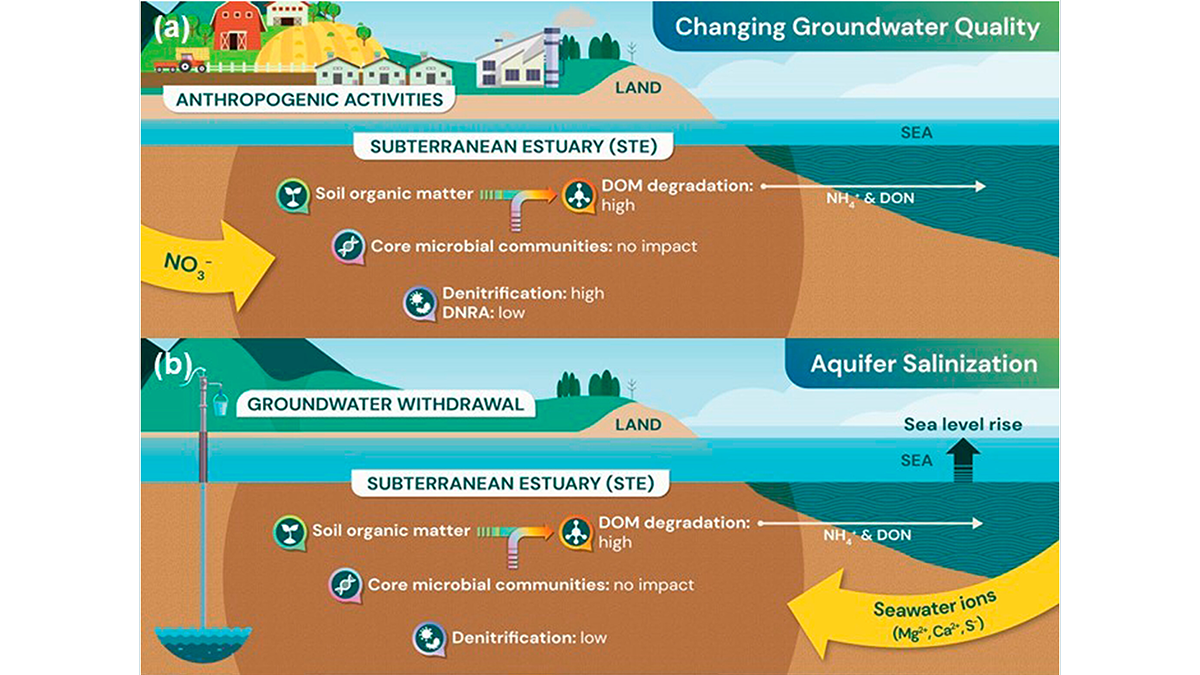Editors’ Highlights are summaries of recent papers by AGU’s journal editors.
Source: Journal of Geophysical Research: Biogeosciences
Subterranean estuaries (STEs), where terrestrial groundwater and seawater intermix, are vital zones of coastal ocean ecosystems. Defined for the first time 25 years ago by Willard Moore (1999), these zones are poorly studied, despite facing escalating threats by future global changes.
Adyasari et al. [2024] seek to fill gaps in knowledge by quantifying microbial communities and their functions within STEs. By employing sediment incubations that mimic anticipated stressors such as rising sea levels, elevated nutrient levels, and prolonged residence times, the study reveals microbial communities’ sensitivity to alterations in nitrates and salinity.
These findings underscore the pivotal role of microbial assemblages in responding to environmental fluctuations within STEs and regulating carbon and nitrogen cycles in coastal ocean regions. Moreover, anthropogenic activities are significantly reshaping STEs, accentuating the urgency for conservation efforts such as reducing groundwater withdrawal rates.
Citation: Adyasari, D., Dimova, N. T., Ní Chadhain, S. M., & Waska, H. (2024). Microbial assemblages and metabolic activity in organic-rich subterranean estuaries: Impact of climate and land use changes. Journal of Geophysical Research: Biogeosciences, 129, e2023JG007660. https://doi.org/10.1029/2023JG007660
—Marguerite A. Xenopoulos, Editor in Chief, JGR: Biogeosciences

